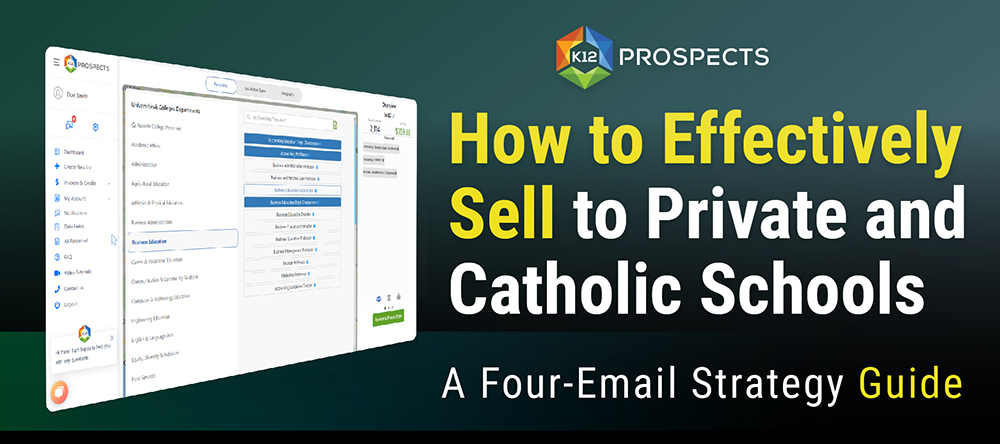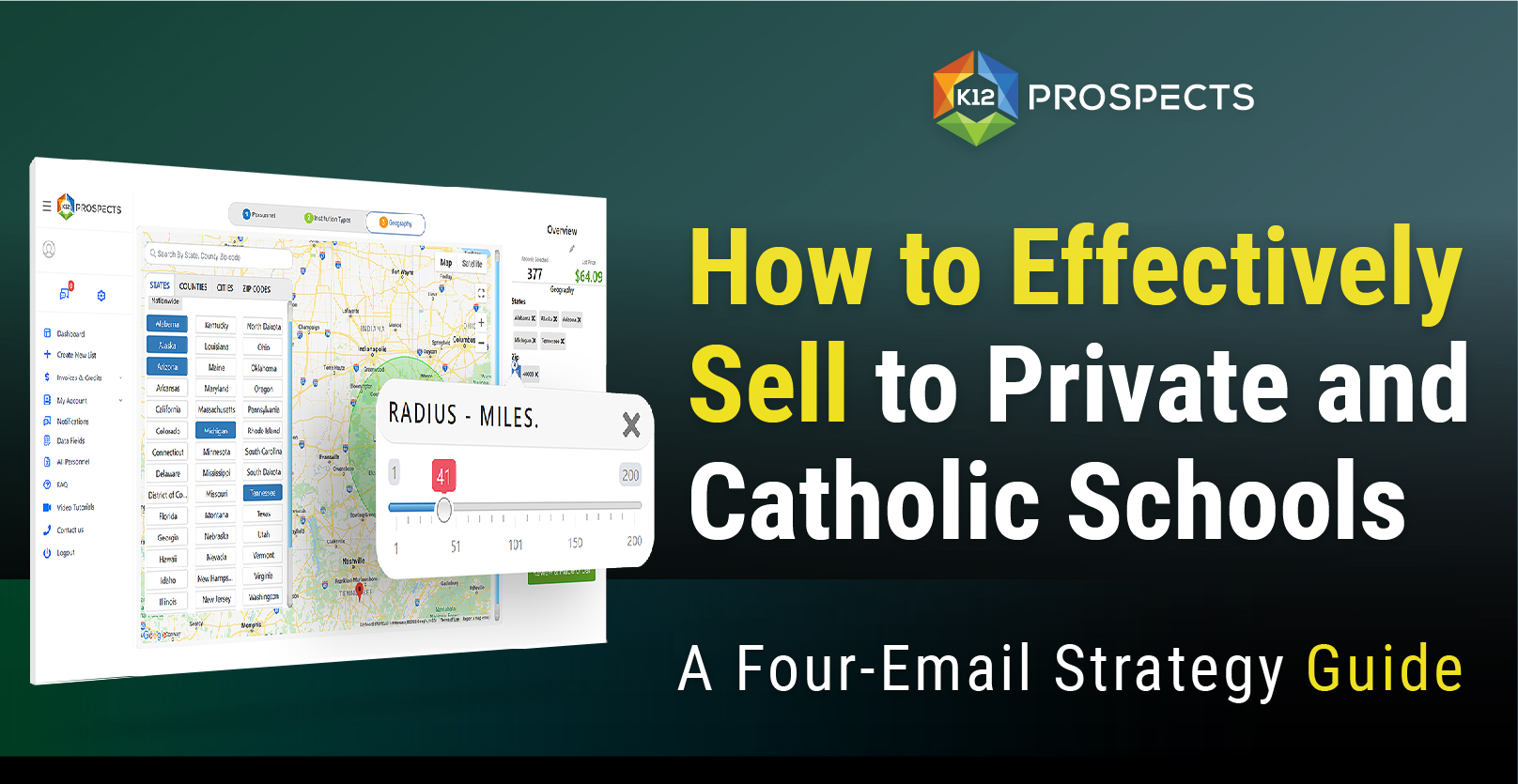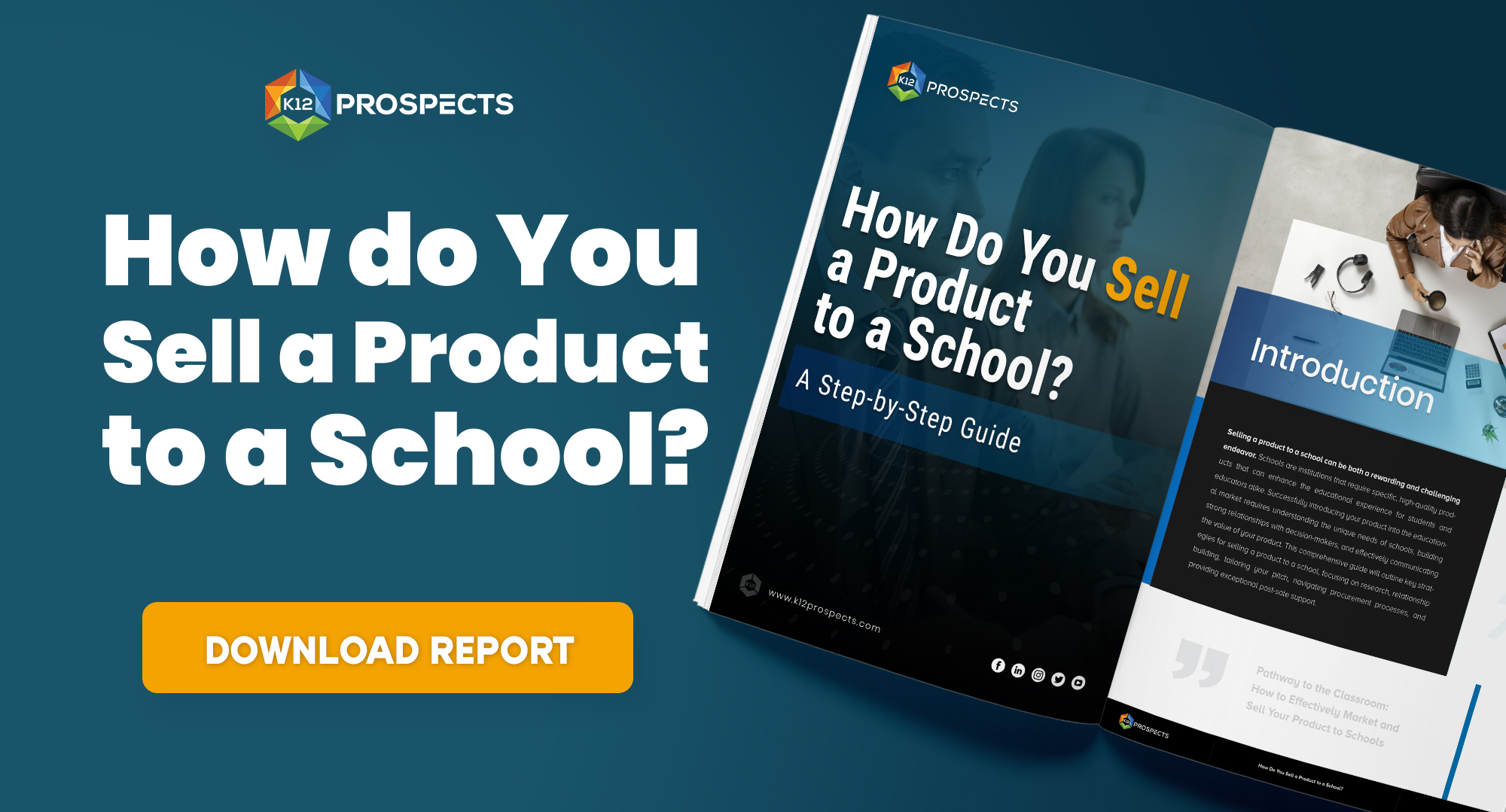How to Effectively Sell to Private and Catholic Schools: A Four-Email Strategy Guide

Reaching decision-makers in private and Catholic schools requires a strategic approach tailored to the nuances of educational institutions. These decision-makers are typically inundated with sales pitches and promotional emails, so standing out requires a combination of tact, relevance, and personalization. This article outlines a four-email strategy to effectively connect with and engage these key individuals. Each email builds upon the last, forming a cohesive campaign that respects their time while providing value.
Email Strategy Overview
- Introduction and Value Proposition (Email 1)
- Educational Insight and Solutions Offering (Email 2)
- Case Studies and Evidence of Success (Email 3)
- Call to Action and Invitation to Discuss Further (Email 4)
Each step in this strategy is designed to gradually build interest and trust, leading up to a direct call to action. This sequence allows the recipient to become familiar with your company and the specific benefits you can offer to their institution.
Email 1: Introduction and Value Proposition
Objective:
The first email serves as an introduction to your company and should succinctly convey your unique value proposition. This email aims to pique interest without overwhelming the recipient with too much information.
Structure:
- Subject Line: “Enhancing [Specific Benefit] for [School’s Name]”
- Greeting: Address the recipient by name.
- Introduction: Briefly introduce yourself and your company.
- Value Proposition: Clearly state what makes your product or service unique and why it’s relevant to their specific needs.
- Soft CTA (Call to Action): Invite them to receive more information in the following emails.
Example:
Subject: Enhancing Student Engagement for St. Michael’s Academy
Dear Dr. Smith,
I hope this message finds you well. My name is Jane, and I represent [Your Company], where we specialize in innovative educational technologies designed to increase student engagement and learning outcomes.
We understand the unique challenges and opportunities within private educational environments like St. Michael’s Academy. I believe our [specific product or service] can significantly enhance both teaching effectiveness and student engagement at your school.
If you’re interested, I’d love to share more about how we can specifically help your institution in my next email.
Best regards,
Jane
Email 2: Educational Insight and Solutions Offering
Objective:
This email should educate the recipient about a specific challenge or opportunity in the educational sector and then introduce your solution as the answer.
Structure:
- Subject Line: “Tackling [Issue] at [School’s Name] With Proven Solutions”
- Body: Begin with a statistic or recent study relevant to the issue. Transition into how your product or service addresses this issue.
- Detailed Description: Provide a concise description of how your solution works and its benefits.
- Soft CTA: Suggest a deeper conversation or demonstration.
Example:
Subject: Tackling Low Student Participation at St. Michael’s With Proven Solutions
Dear Dr. Smith,
Recent studies show that engaging students in the classroom has become increasingly challenging across educational institutions. At [Your Company], we’ve developed [Product/Service] that has been proven to increase student participation by up to 50%.
Our [Product/Service] facilitates interactive learning through [brief explanation of how it works], making classes more engaging and informative. Could this be what you’ve been looking for at St. Michael’s?
I would be happy to discuss this in more detail and demonstrate the immediate benefits that our other clients have experienced.
Looking forward to your thoughts,
Jane
Email 3: Case Studies and Evidence of Success
Objective:
Reinforce the effectiveness of your product or service with tangible evidence and testimonials. This builds credibility and trust.
Structure:
- Subject Line: “Proven Success at Schools Like Yours”
- Body: Highlight one or two case studies or testimonials from similar institutions.
- Results: Emphasize the measurable benefits achieved.
- Soft CTA: Propose a meeting or call to discuss potential outcomes for their school.
Example:
Subject: Proven Success at Schools Like Yours
Dear Dr. Smith,
I wanted to share a couple of success stories from schools similar to St. Michael’s Academy that have implemented [Product/Service]. For instance, Holy Cross High School saw a 30% improvement in student test scores within a single semester of using our solution.
[Insert brief case study or testimonial].
These results are not just numbers; they represent real improvements in teaching quality and student satisfaction. Could we schedule a time to discuss how we might achieve similar results at St. Michael’s?
Warm regards,
Jane
Email 4: Call to Action and Invitation to Discuss Further
Objective:
The final email in this sequence should be a direct call to action, aiming to secure a meeting or a demo.
Structure:
- Subject Line: “Ready to Transform [Specific Aspect] at [School’s Name]?”
- Body: Reiterate the key benefits and invite them to a personalized demonstration or discussion.
- Final CTA: Strongly encourage scheduling a meeting or call.
Example:
Subject: Ready to Transform Student Engagement at St. Michael’s?
Dear Dr. Smith,
Thank you for considering how [Your Company] can play a role in enhancing educational outcomes at St. Michael’s Academy. We are confident that our [Product/Service] can make a significant difference in your school.
Are you available for a brief call next week to discuss this further? I would also be happy to arrange a demo at your convenience.
Please let me know what time works best for you, and I will do the rest.
Looking forward to the opportunity to collaborate,
Jane
The step-by-step email strategy outlined here is designed to progressively build interest and trust between your company and the decision-makers at private and Catholic schools. By providing clear, concise, and relevant information at each stage, and by tailoring your communications to address their specific needs and challenges, you can effectively engage these important stakeholders and significantly increase your chances of a successful partnership.



